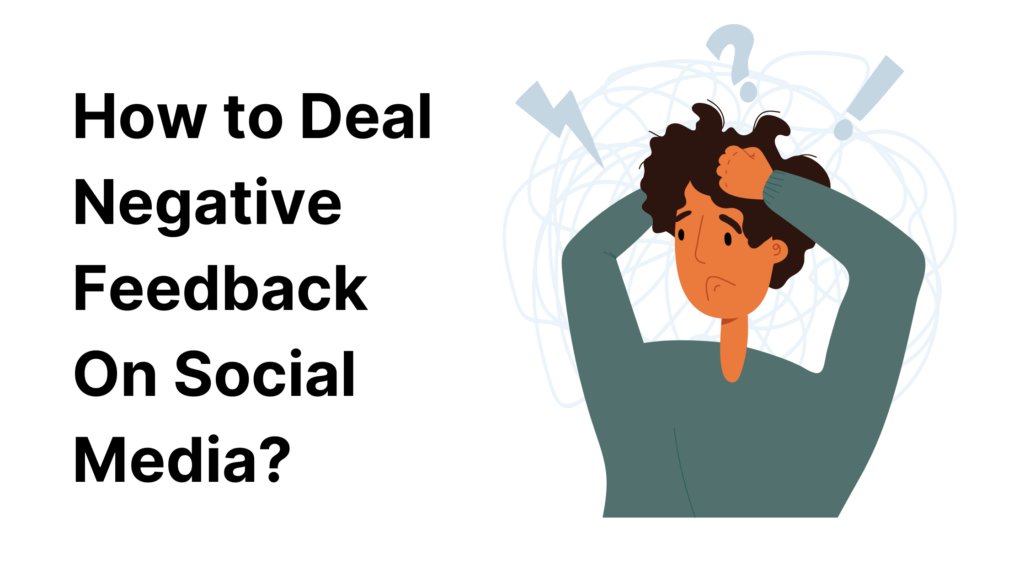
In today’s highly competitive digital marketplace, social media has become a powerful tool for businesses to connect with their customers and build relationships. While it provides excellent opportunities for growth, visibility, and sales, it also opens the door to public feedback—both positive and negative.
As online shopping continues to rise, customer satisfaction becomes crucial for a brand’s survival. A single negative review can potentially damage your reputation and impact future sales. The key to long-term success lies in delivering a seamless customer experience and addressing any issues that arise promptly and thoughtfully.
In this article, we’ll discuss the strategies you can use to handle negative feedback on social media while maintaining and even improving your brand’s reputation.
Impact of a Negative Comment on Future Buyers:
Social media amplifies customer opinions, giving every individual a platform to express their satisfaction—or dissatisfaction. A positive review can enhance your brand’s credibility, attract more customers, and foster loyalty. On the other hand, a negative comment can severely impact your brand’s perception and deter potential customers. In an instant, a business can find itself losing trust and sales.
Negative feedback, however, should not be viewed as a disaster but as an opportunity to showcase how much you care about your customers and their experiences. When handled correctly, it can strengthen your relationship with both the unhappy customer and your broader audience. Here are some strategies for turning negative feedback into a positive brand experience.
Strategies to Deal with Negative Feedback:
1. Listen to the Customer:
The first step when faced with negative feedback is to listen carefully to the customer’s concerns. Understand the specifics of why they are unhappy—whether it’s due to a delay in delivery, product quality, or service issues. Active listening demonstrates that you value their input, and it allows you to fully grasp the problem. Once you’ve identified the issue, reassure the customer that you’re committed to resolving it.
2. Identify the Root Cause:
Pinpoint the underlying reason for the negative experience. Was there a breakdown in communication? Was the product not as described? Understanding what went wrong helps you take corrective action, prevent future occurrences, and refine your business processes. Be thorough in investigating the situation, and acknowledge the role your business played in the mishap.
3. Offer a Solution or Refund:
A smooth return or refund policy is essential for establishing trust with your customers. Clearly outline these policies on your website and social media platforms so customers feel confident when making purchases. In cases where a product or service truly fell short, offering a return, replacement, or refund shows that you prioritise customer satisfaction.
4. Respond with Empathy:
Mistakes happen in every business, but what truly matters is how you handle them. When responding to negative feedback, use a tone of empathy and understanding. Acknowledge the customer’s frustration, and show that you genuinely care about their concerns. Avoid overpromising in the future, and make sure your messaging is clear to set realistic expectations from the start.
5. Offer Freebies or Discounts:
To turn a negative situation around, consider offering something of value to the customer, such as a discount on their next purchase or a small freebie. This gesture not only helps smooth things over but also encourages repeat business. A customer who feels valued is more likely to give your brand another chance.
Conclusion:
Negative feedback on social media may seem intimidating, but it’s a valuable opportunity to show your commitment to customer satisfaction. By listening, empathizing, and offering practical solutions, you can turn negative experiences into positive ones, potentially gaining even more loyal customers in the process. Remember, the way you handle feedback says a lot about your brand—and customers will take notice of how much you care.
So, the next time you receive negative feedback, approach it with a mindset of learning and improvement. It’s not just about protecting your reputation—it’s about creating lasting relationships with your customers.
Happy Marketing!



